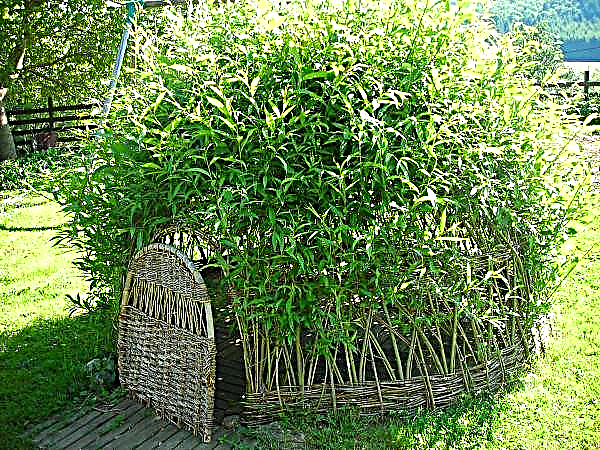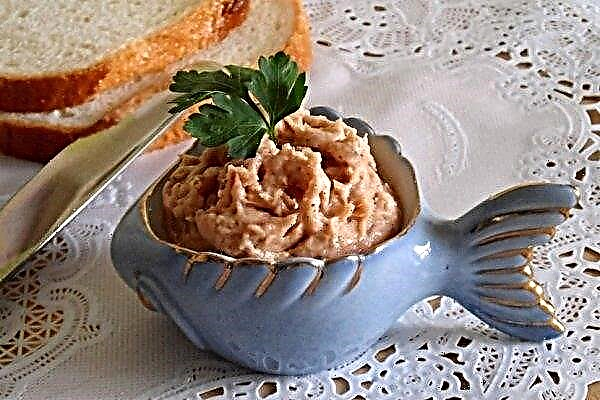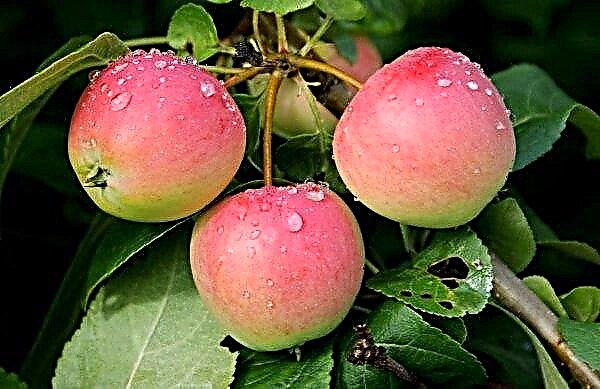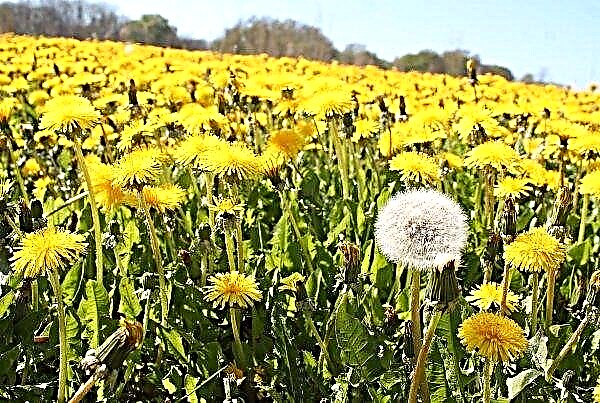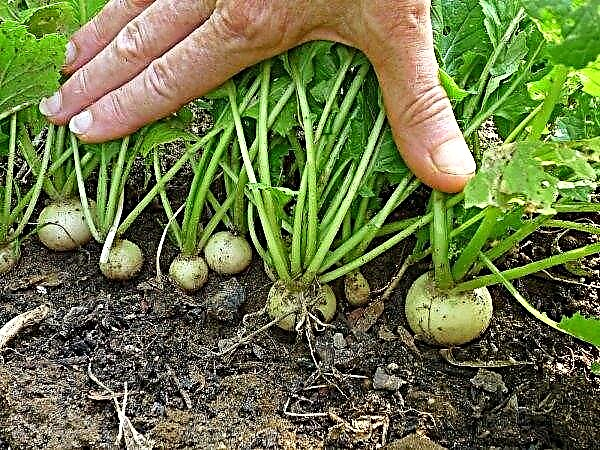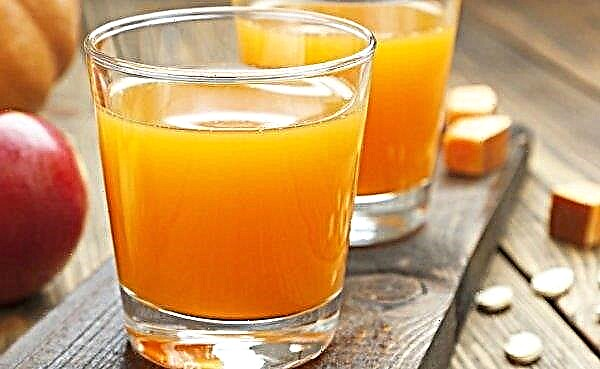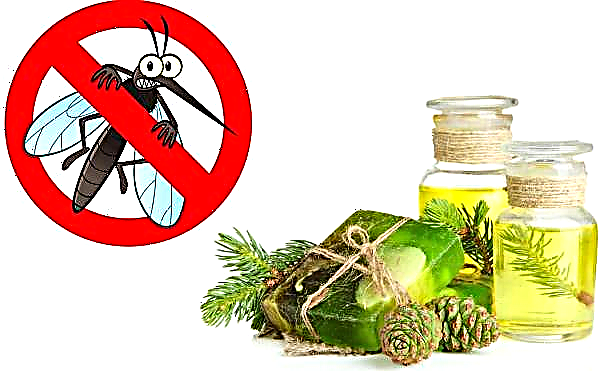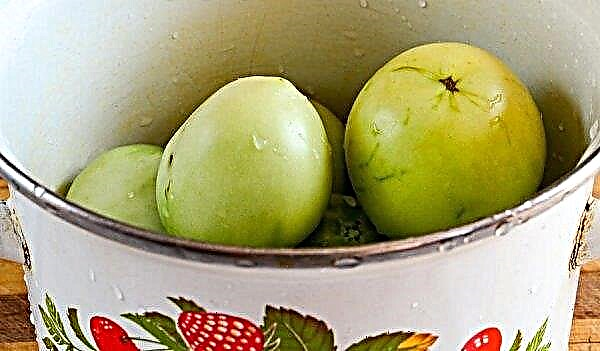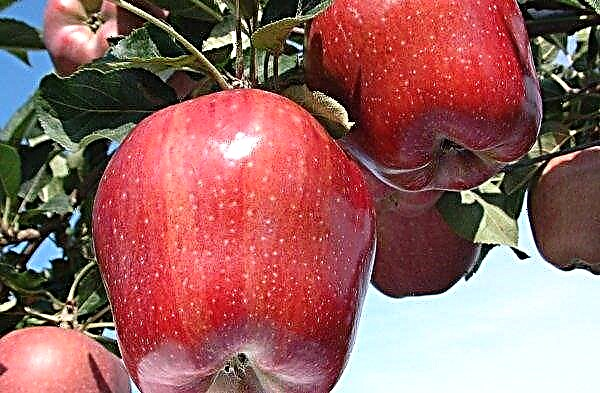Today, over 60 types of honey are known to exist. The features of one of them - obtained from forbs - will be discussed in this article.
Description and characteristics of honey from herbs
The name of this variety of bee product indicates that it is made from nectar and pollen collected from various wild and cultivated plants. The collection takes place from late spring to late summer.
What does it look like
Depending on the crops from which the nectar is collected, it can have a different color, structure, smell and taste. In addition, the characteristics of the product will also be different, depending on where and at what time the collection was carried out. Such a gift of an apiary can almost always be distinguished from a monocomponent one.
Did you know? People have been using honey for therapeutic and cosmetological purposes for several millennia. There are drawings of cave paintings relating to the period of 13 thousand years BC. e., which depicts how people collect wild honey.
Colour
Product color ranges from beige to dark brown. That is, it can be either light (most often), bright yellow, or very dark. Before crystallization is characterized by absolute transparency.
Taste and Aroma
This variety has a specific and rich taste. It has a lot of sweets (often with a sugary note), there is a taste of flowers, fruits. By smell, honey from herbs is somewhat similar to buckwheat. In the aroma you can also feel the sugaryness and fruity notes.
Sugaring terms
Crystallization in flower forbs is slow. This honey becomes candied much later than other types - after about 3-4 months. When the product is sugared, it looks like a thickened mass in which there are a lot of porridge-like crystals.
Varieties of honey from herbs
Depending on the plants whose pollen was taken for the production of honey forbs, it is divided into several varieties:
- Meadow. Due to its excellent characteristics, it is of particular value and is the most popular variety. It is bright yellow (amber) in color, has a delicate taste and pleasant aroma. It contains pollen of thyme, sage, clover, dandelion.
- Mountain. It is good because it is collected from plants whose pollen is saturated with useful, oxygen-rich mountain air. Honey plants are acacia, hawthorn, blackthorn.
- Forest. The product contains pollen from honey plants such as linden, hawthorn, raspberry, strawberry, and other wild plants growing in forests. This variety is bright yellow, very sweet, has a strawberry flavor.
- Steppe. It is considered the most useful. It is collected from honey plants such as rape, clover, buckwheat. Also involved in the manufacture of wild herbs - sow thistle, wild turnip, cornflower.
- Bashkir. The rarest variety. Bees for its preparation fly around a large number of different honey plants: geranium, St. John's wort, cornflower, chamomile, thistle, plantain, sage, oregano, heather, strawberries, dandelion. The result is a golden or dark brown product with a rich taste and aroma.
- Northern Forbs. It is characterized by a rich taste with a slight acidity, pleasant aroma, amber color, liquid consistency. Bees collect it from wild plants in the northern regions, for example, from raspberries, fireweed, clover, etc.
The chemical composition and calorie content of the product
To find out what benefits honey brings to people, it is worth studying its chemical composition. It contains vitamins B1, B2, B5, B6, B9, C, H, PP. It is rich in potassium, calcium, magnesium, sodium, sulfur, phosphorus, iron, iodine, cobalt, manganese, copper, fluorine. This high-calorie product - 100 g contains 314 kcal, which is about 20% of the daily norm for the human body.
The nutritional value of the product is as follows:
- proteins - 0.8 g;
- fats - 0 g;
- carbohydrates - 80.3 g;
- water - 17.4 g;
- organic acids - 1.2 g;
- ash - 0.3 g.
Did you know? The amino acid composition of honey is close to that of human blood. Of the 24 amino acids contained in the bee product, 22 are in the blood.
Properties of honey for the human body
Such a rich chemical composition determines the benefits of honey for humans. However, this product can be harmful, and therefore has a number of contraindications.
Beneficial features
- With moderate use, honey is able to have such a positive effect on the human body:
- beneficial effect on the immune, cardiovascular, digestive, circulatory, nervous system;
- contributes to the overall strengthening of the body;
- relieves inflammation;
- calms nerves;
- promotes the fastest healing of wounds;
- leads the body to tone;
- acts as an antiseptic and antifungal agent;
- slows down the aging process;
- softens and moisturizes the skin.
Harm and contraindications
A sweet product can cause harm in two cases:
- with excessive eating;
- in the presence of allergies.
This product should be used with caution in people suffering from diabetes mellitus, obesity, and diseases of the digestive tract.
- Honey is contraindicated for such persons:
- children under 1 year old;
- nursing mothers.
Important! An adult is not recommended to consume more than 150 g of honey per day, a child under 6 years old - more than 20 g, after 6 years - 50 g. If this recommendation is not followed, an overdose is possible, which is manifested by nausea, heartburn and digestive upset.
How to determine honey forbs for naturalness at home
Unfortunately, unscrupulous sellers often sell synthetic, low-quality as a natural product, and also under the guise of valuable varieties can sell cheaper types. Therefore, before you go shopping, you need to familiarize yourself with the information about what the variety you plan to purchase should look like (color, texture, smell).
Video: Method for checking honey for naturalness
Qualitative honey can be determined using these recommendations:
- Check ductility. Insert a spoon and make a few circular movements. A natural product quickly makes several rounds around it, and a poor-quality or synthetic one will simply drain from it.
- Check ductility. Place a stick in the product and pull it out. Natural honey will stretch for a while like a thread, and then fall completely, forming a hump on the surface, which will soon disperse. Synthetic - drip a normal drop.
- To taste. When using a quality product, a slight tickle is always felt in the throat - it irritates the mucous membrane.
- Smell. There is no honey smell in fakes.
- Look at consistency. A liquid product can only be in the summer and early fall. In winter, it should already crystallize.
- Rub with fingers. A quality product is well rubbed and absorbed into the skin.
- Pay attention to the presence of foam. Her presence indicates the beginning of the fermentation process. You should not buy such a product; it is spoiled.
- The seller must ask for a certificate stating the place, time of collection and pollen composition.
When choosing a type of honey, you should know that often it can contain impurities of other types - for example, linden can be mixed with herbs. If the manufacturer indicates such a composition on the label, this means that the herbs here are contained in small quantities and have little effect on the composition and quality of the product, and honey has a more linden-like appearance.
How to apply
Honey is used as a component of traditional medicine, which allows you to treat and prevent the development of many diseases. However, more often it is used in cooking as a sweetener and an ingredient in many dishes.
In folk medicine
For the heart and blood vessels. Grind a head of garlic (1 pc.) And lemon (1 pc.) With a blender. Introduce honey (100 g). After insisting for 1 week in a dark place, eat 1 tsp. on an empty stomach in the morning and before bedtime, diluting in 200 ml of warm boiled water for 60 days.
With liver diseases. Mix 1 part honey with 1 part chopped leaves or aloe juice. Eat 1-2 tbsp. 40 minutes before eating.
With insomnia. Take 1 tbsp. a spoon diluted in 1 tbsp. water or milk, 40 minutes before going to bed.
To normalize the menstrual cycle. A mixture of aloe juice (1 tbsp.), Honey (600 g), wine "Cahors" (600 ml), snake highlander (3 tbsp.) Hold for 1 hour in a water bath. Eat 1 tbsp. 3 times a day before meals.
To alleviate the condition during menopause. 200 g of viburnum berries pour a glass of boiling water. When cooled to + 50 ° C, dissolve 1 tbsp. In tincture. bee product. Drink before bedtime.
With inflammation of the female reproductive system. Grind aloe leaves to make 150 g, and combine with 150 g of bee product. Dip a swab into the mixture and place it overnight in the vagina.
With cervical erosion. Combine 1 part of honey with 2 parts of warm boiled water. Dip a swab and insert into the vagina before bedtime.
With hypertension. Dissolve 1 tbsp in 200 ml of water. honey and juice of 0.5 lemon. Drink a monthly course of 10 days until the pressure normalizes.
Important! Only warm drinks that are warmed up to + 50 ° C can be sweetened with honey. When it is stirred in too hot a liquid, the product loses most of its valuable substances.
In cooking
Honey is often used in cooking. It gives drinks and dishes a unique taste and interesting aroma, and also extends their shelf life.
It is used for sweetening drinks, making syrups, baking, sweets, desserts. Many love it as gravy, for example, to pancakes, pancakes, cheesecakes. In pastry shops you can often find the famous honey cake, cakes of which are mixed with honey.
Use it not only in sweet foods, but also when baking meat, fish, vegetables. It is the gift of the apiary that gives them a unique golden crust and a sweet taste. It is also an excellent addition to cereals, dairy products, marinades, sauces. It goes well with spices (cardamom, coriander), lemon, lime, cinnamon, ginger, garlic, citrus zest.

Terms and conditions of storage
If honey is stored in the right conditions, then it is able to preserve useful properties for several years. The main condition is temperature: it should be in the range from –5 ° С to + 20 ° С. When storing a bee product in normal room conditions, part of the valuable substances will gradually disappear. If you store the container with honey at temperatures above 40 ° C, then this process will go much faster.
In order for the apiary gift to retain its structure longer, it must be kept at a stable temperature. Temperature jumps lead to uneven crystallization.Important for storage and humidity with lighting. The drier the indoor air, the better and longer the product is stored. When humidity is high or near water sources, the apiary's gift becomes liquid and deteriorates faster.
As for lighting, honey should be stored in the dark. Exposure to sunlight affects the chemical composition and significantly reduces the number of useful elements.
To avoid the acquisition of extraneous odors and a change in taste, honey must be stored away from strongly smelling substances and food.
The storage time in which the product is placed also affects the storage duration. It should be perfectly clean and made of dark glass. During storage, the container must be tightly closed with a lid. You can put honey in enameled or ceramic containers. Plastic and galvanized containers are not suitable for this purpose.
Important! Honey should be discontinued if a person has a rash, dizziness, gastrointestinal problems (diarrhea, vomiting), sneezing, lacrimation, sore throat. This indicates the development of an allergic reaction.
So, honey from herbs is a variety made from pollen and nectar collected from various plants. Depending on which cultures are included in the composition, its color, smell, taste and texture are different. This type of product has a number of useful properties on the human body, and in the absence of contraindications is recommended for use by adults and children in moderation.

